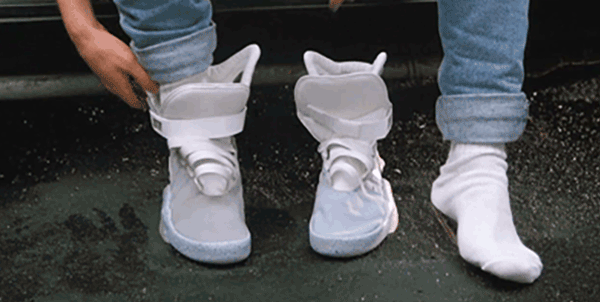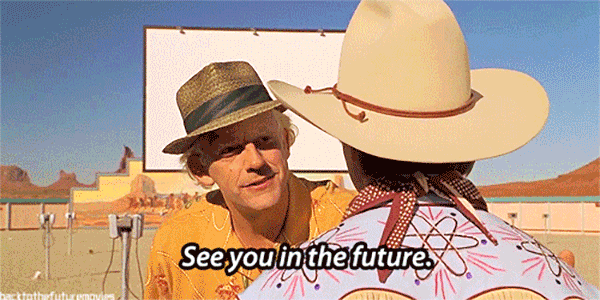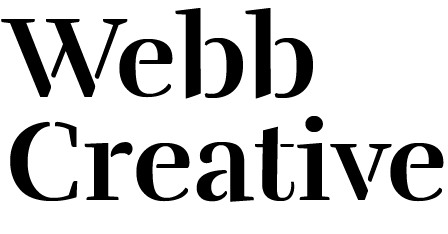
Dear Matt & Katherine (circa 2002),
Hi. We’re writing to you from the future so we apologize for the awkwardness of this letter, considering you haven’t yet met each other and won’t for another three years. Let’s not worry about that right now and just get to the point. We’re you, from the future. I know, pretty hackneyed conceit huh? We’re sure you’ll appreciate the usefulness though.

We’re writing this because you’re both about to begin your design education, buy your first flip phones, spend hundreds of dollars on 12 shades of grey markers, and we have a few pointers that might help you stay on track over the coming years (although sorry, those markers will definitely dry up before you learn how to use them). You know, in an ‘If only I knew then what I know now’ kinda way. Our “Top 4 Pieces of Advice for New Designers” if you will. Let’s get started;

Always do more than the minimum
We’ve learned that great designers often set themselves apart from merely competent designers through the sheer volume of work they produce. As you’ll soon learn, design is an iterative process (full of design jargon) where the quality of the final solution is often a direct result of the amount of time and consideration it’s given. You should also get very comfortable with the fact that the majority of the work you do will never be seen beyond presentation, just due to simple mathematics. If you show 3+ concepts for every project, that means AT MOST 33% of your work will get finalized. It took us awhile to understand that this unused work isn’t ‘wasted’, it’s where you gain experience. And, if you’re trying to get in those 10,000 hours, you’re going to need a lot of experience.
Learn to accept criticism
This one is tough, and we’ve learned it’s also a deciding factor in determining if someone can practice design professionally. You know that academic maxim ‘publish or perish’? For designers it translates to ‘crit or quit’. You’ll both need to learn that criticism of your work is not criticism of you personally, and that when you’re first starting out the amount of time and effort you put into your work has very little bearing on it’s quality. In those first 2 years of your design education, there will be late nights, all-nights, and zero consideration given the next morning when your work is pinned to the wall in front of the class and dissected, questioned, and ridiculed. This is one of the most valuable experiences of your design education. What you’re about to go through pales in comparison to the criticism you’ll receive once you enter the job market as a design professional.
Embrace the unique and unexpected
I know the internet seems great for design discourse in your 2002 reality (Spoiler alert: Speak Up doesn’t make it into the century’s double digits), but in a few short years it will topple the ivory tower of design tradition and level the playing field worldwide. Without going into too much detail (at the risk of parallel realities colliding), differentiating yourself and having a personal perspective has become much more valuable than you might have anticipated. You’re both already doing this with screenprinting and fashion design, but it will be important to embrace the unexpected opportunities that arise over the course of your careers. Who knows, perhaps one of you might be asked to create a logo for an upstart mexican pop-up that goes viral (that’s a good thing now), just because your indie printing background gives your work a slightly more ‘street’ feel. Or maybe one of you lands a great job at a tech startup because of the children’s illustrations you took a week off to create just for fun… I mean, who’s to say really, but we’re pleased to report that the happy accidents greatly outweigh the temporary missteps.

Pay your dues
We can’t stress this enough. As someone very important to your future success will tell you, ‘school is a 4 year sprint, and your career is a 40 year marathon’. Don’t be tempted to try and skip right to the top, because you’ll find out you’re really not ready to be there. There’s a huge difference between design school and the professional world. It will take you years to get to the point where you’re able to function autonomously and effectively as a designer, simply because experience heavily informs both conceptualization and execution. That being said, where you choose to pay your dues is incredibly important. You could work at some studios for years without really learning or progressing, and you can learn more by spending a few years at some studios than you could by completing a masters degree. Please choose wisely when deciding where your 10,000 hours are spent.

Got it? Awesome. Now go finish your respective projects so that you don’t flunk out and jeopardize getting into that honours program in a few years. Trust us, it’s important.
Sincerely,
Yourselves (circa 2017)

– THE END –
INQUIRE
Careers
[email protected]
+1 604 910 7160
- By Appointment Only
15b Commercial St.
Nanaimo, BC
Canada, V9R 5G3
NEWSLETTER
FINEPRINT

